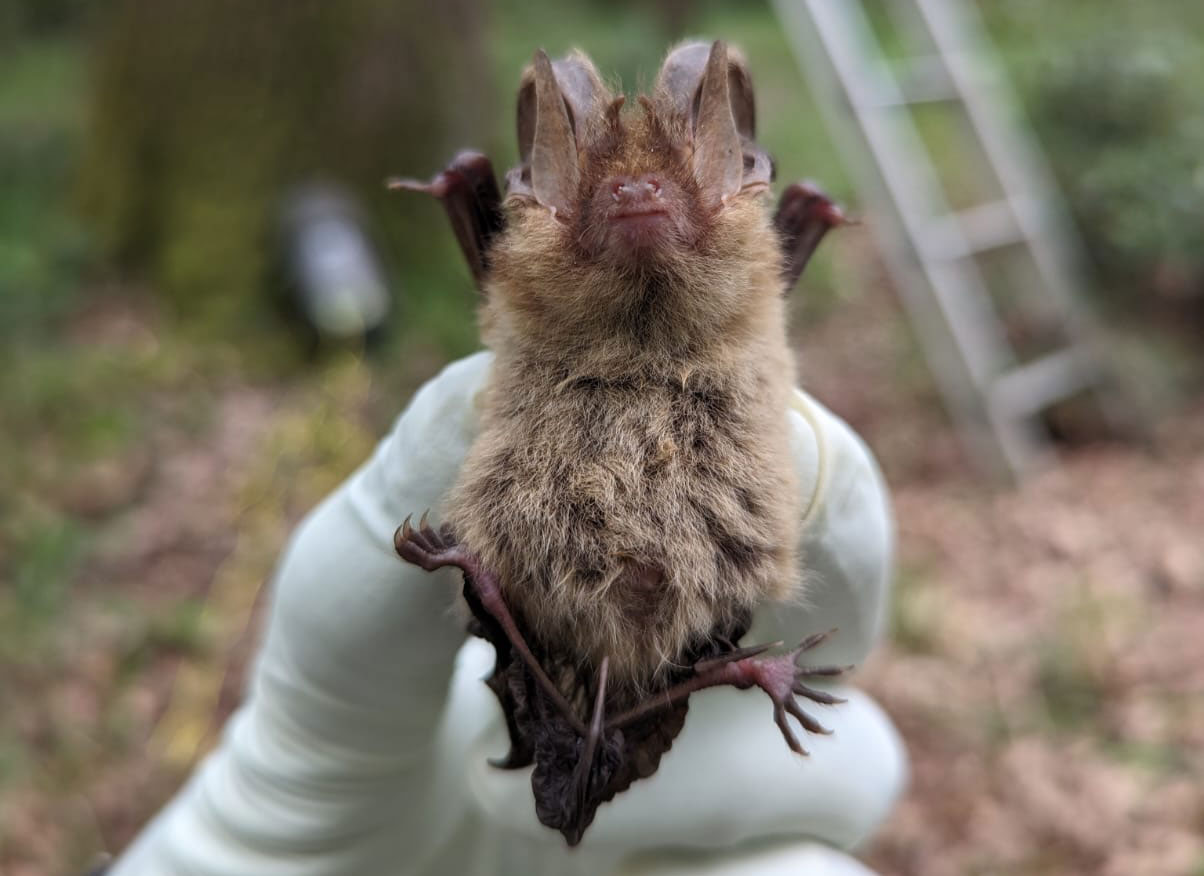You should ask for a survey if a development proposal is likely to negatively affect bats or their:
- Roost habitats
- Foraging habitats
- Commuting habitats
A survey is needed if one or more of the following applies:
- Distribution and historical records suggest bats may be present – you can search the National Biodiversity Network Atlas by species and location
- The development site includes buildings or other built structures, underground structures or trees that provide roosting opportunities for bats
- The proposals include flood lighting of buildings or green space close to habitats that bats tend to use
- The proposals are close to water bodies, quarries or natural cliff faces
- It is a wind farm proposal close to a site designated for bats or close to habitats that bats use for commuting and foraging
The absence of a record does not mean there are no bats. It could mean there is no survey data available for that location. (Gov.uk)
How long does a bat survey take?
This will depend on the type of survey that is required and the size of the project. For most residential projects such as extensions and conversions, the initial PRA will take a few hours plus additional time to research the site and compile a report for the Local Planning Authority.
Emergence/Re-entry surveys usually take around 2 hours starting 15 minutes before sunset. If a structure is considered high potential or a confirmed roost then 3 Emergence/Re-entry surveys will be required at 3 weeks intervals during the active bat season.
Tree surveys are dependent on the number of trees being assessed.
When can bat surveys be carried out?
Preliminary Roost Assessments (PRAs) and Ground Level Tree Assessments (GLTAs) can be carried out any time of the year but Emergence/Re-entry surveys need to be carried out during the active bat season May-September. Aerial Tree Surveys should also be conducted during the active bat season unless it is a pre-fell check. This is where a tree is checked and if there is no evidence of roosting bats and the tree has previously had 3 up-to-date surveys then it can be immediately felled.
How long is a bat survey valid for?
A bat survey in the UK is typically valid for one to two years, but this time frame can be dependent on the local planning authority and the type of project. The validity of a bat survey is limited because bats move around frequently and change roosts regularly. Using outdated bat surveys can lead to non-compliance with wildlife regulations and may impact building plans. Natural England will require survey data from the most recent bat survey season for European Protected Species (EPS) licence purposes.
How we can help
If your development or home needs a Bat Survey, contact us here to see how we can help.
